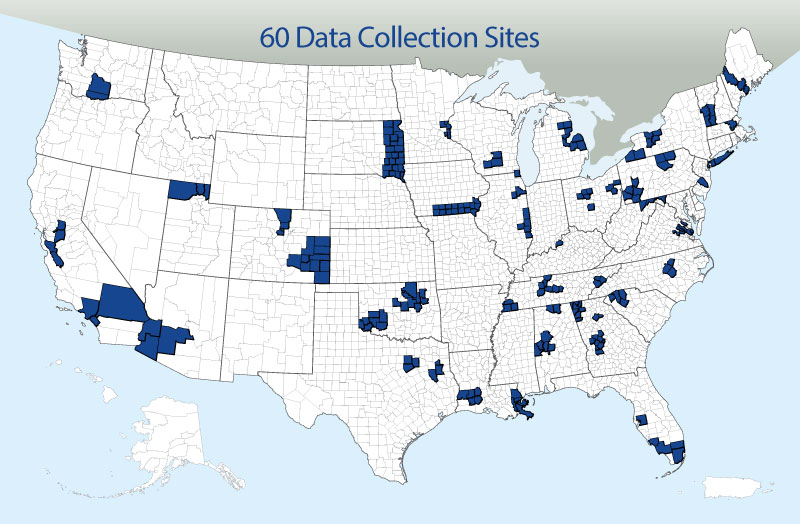
What It Is
The National Highway Traffic Safety Administration has collected crash data since the early 1970s to support its mission to reduce motor vehicle crashes, injuries, and deaths on our nation’s highways. The Crash Report Sampling System (CRSS) builds on the retired, long-running National Automotive Sampling System General Estimates System (NASS GES). CRSS is a sample of police-reported crashes involving all types of motor vehicles, pedestrians, and cyclists, ranging from property-damage-only crashes to those that result in fatalities. CRSS is used to estimate the overall crash picture, identify highway safety problem areas, measure trends, drive consumer information initiatives, and form the basis for cost and benefit analyses of highway safety initiatives and regulations. NHTSA’s crash data collection program consists of CRSS, the Fatality Analysis Reporting System, the Crash Investigation Sampling System, Special Crash Investigations, Non-Traffic Surveillance, the Crash Injury Research & Engineering Network, and special studies conducted to address various safety topics.
How It Works
CRSS obtains its data from a nationally representative probability sample selected from the estimated 6 to 7 million police-reported crashes that occur annually.
These crashes include those that result in a fatality or injury and those involving property damage. By focusing attention on police-reported crashes, CRSS concentrates on those crashes of greatest concern to the highway safety community and the general public.
Sampling
To be eligible for the CRSS sample, a police crash report must be signed by law enforcement and completed using an official crash report; it must involve at least one motor vehicle traveling on a trafficway; and the crash must result in property damage, injury, or death.
These crash reports are chosen from 60 areas across the United States that reflect the geography, population, miles driven, and crashes in the United States. CRSS samplers review crash reports from hundreds of law enforcement agencies within the sites, randomly sampling hundreds of thousands of crash reports each year. Selected crash reports are then coded to create the annual data file. No other data is collected beyond that in the selected crash reports.

Data Files
Trained CRSS Coders interpret and code data directly from the crash reports into an electronic data file. Approximately 120 data elements are coded into a common format. After coding, quality checks are performed on the data, both electronically and manually to ensure validity and consistency. When these are completed, CRSS data files and coding documentation become publicly available.
Cooperation
CRSS depends on the participation and cooperation of law enforcement agencies and state. This cooperation lets NHTSA list and select crash reports. Police crash reports – which provide key information on the location of the crash, the vehicles involved, and whether injured occupants were transported for medical care – are obtained and treated as confidential documents.
Personal information such as names, addresses, license and registration numbers, and crash locations are not included in the public CRSS files.
How the Information Is Used
The data collected by CRSS is used by NHTSA and others for a variety of purposes:
- Assessing the overall state of highway safety and identifying existing and emerging highway safety trends.
- Understanding the national picture regarding key safety priorities such as impaired driving, restraint use, and crashes involving pedestrians and bicyclists.
- Establishing an estimate of the number of people injured in motor vehicle-related crashes annually.
- Assessing the effectiveness of motor vehicle safety standards and highway safety programs.
After all personal identifiers are removed, information collected by CRSS is made available to other Federal agencies; state and local governments; universities; research institutions; automobile, trucking, and insurance industries; and the general public.
More Information
For statistical publications and information, or data files, contact:
National Highway Traffic Safety Administration
National Center for Statistics and Analysis
Data Reporting and Information Division, NSA230
1200 New Jersey Avenue SE
Washington, DC 20590
VEHICLE SAFETY HOTLINE
Do you need information on vehicle safety recalls, crash test results, or fuel economy ratings? Do you have a complaint about a possible motor vehicle safety defect?
Call the Vehicle Safety Hotline, toll-free: 888-327-4236
